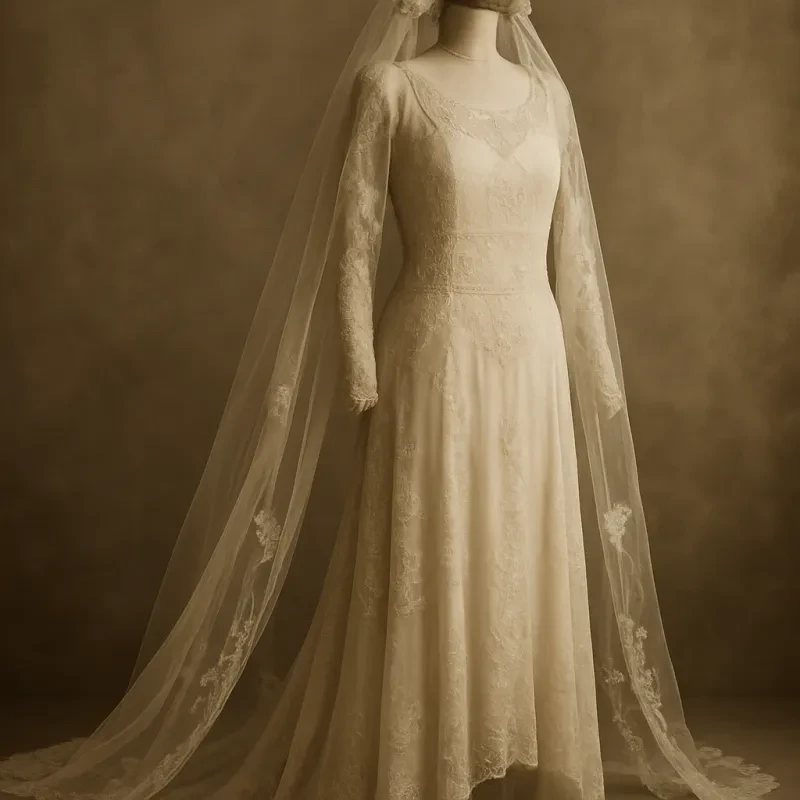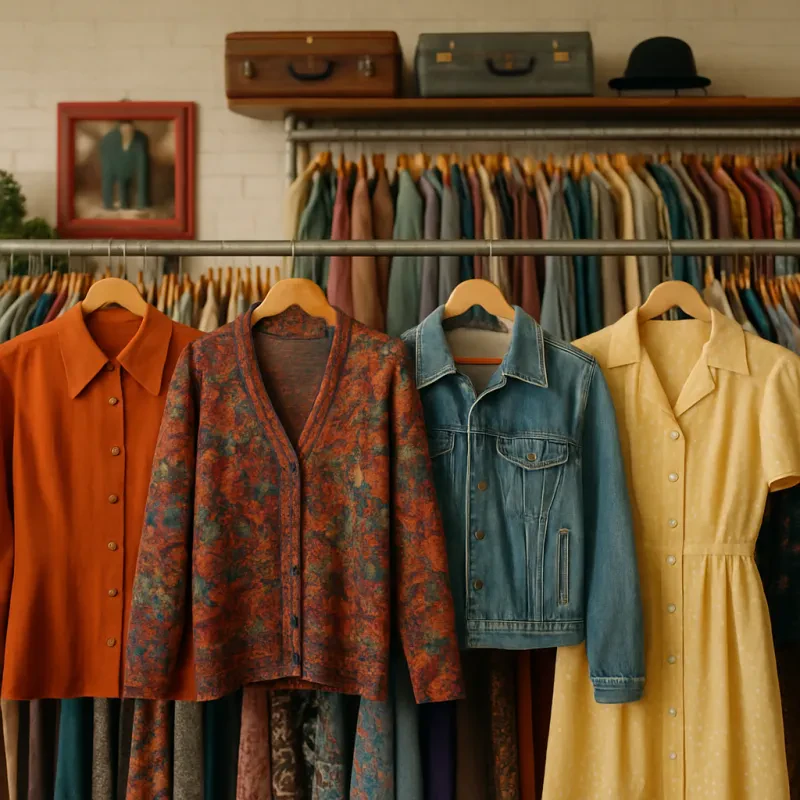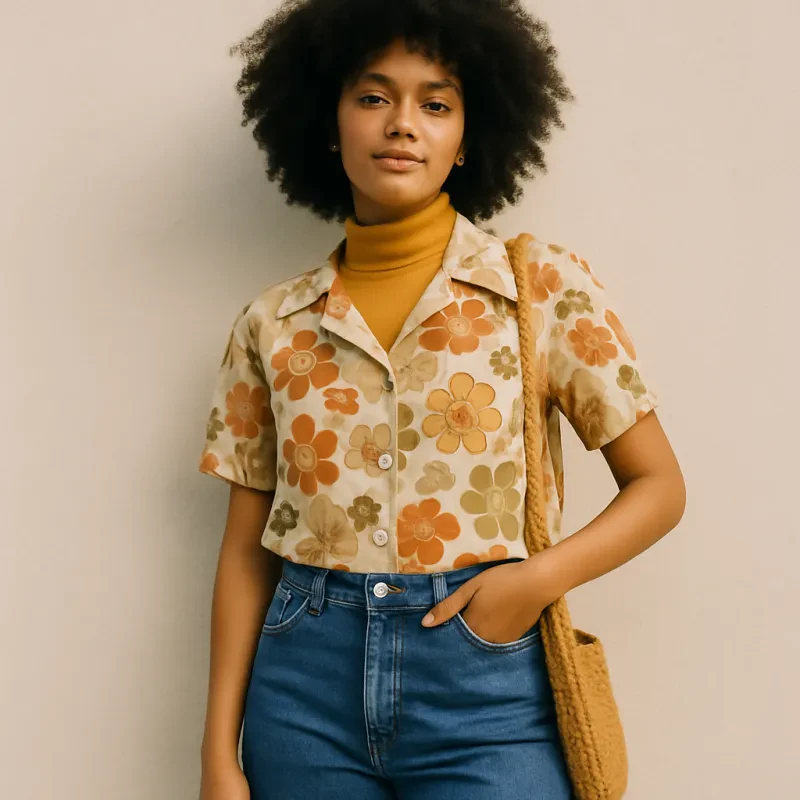In the 1960s, a wave of cultural revolution swept across the world, and fashion was at the forefront of this movement. The era, often referred to as the Swinging Sixties, saw a dramatic shift in society's attitudes and behaviors, and this was fully reflected in the fashion choices of the time. Fashion became a means of self-expression and rebellion against traditional norms.
One of the defining fashion trends of the 60s was the emergence of the mod style. Inspired by the sleek and minimalist designs of the London fashion scene, mod fashion was characterized by its clean lines, bold colors, and geometric patterns. Short, tailored dresses paired with go-go boots became the iconic mod look for women, while men embraced slim-cut suits with narrow ties. Mod fashion rejected the frills and excesses of previous decades, embodying the youthful spirit and optimism of the era.
The cultural revolution of the 60s also saw a significant rise in the popularity of unisex fashion. Ideas of gender fluidity and equality started influencing fashion choices, leading to the blurring of traditional gender boundaries. Men and women began embracing similar styles, such as the iconic mini-skirt. The mini-skirt, pioneered by British designer Mary Quant, was a symbol of liberation and female empowerment. It challenged societal expectations and opened up new possibilities for self-expression.
The Swinging Sixties marked a time of rebellion, challenging the status quo in all aspects of life, including fashion. The mod style and the rise of unisex fashion were just some of the ways in which individuals expressed their desire for change and freedom. These fashion choices not only revolutionized the industry but also had a profound impact on shaping society's perceptions and values. The Swinging Sixties will forever be remembered as a time when fashion broke boundaries and became a powerful tool for cultural transformation.
From Mini Skirts to Bold Prints: Iconic Mod Style
In the swinging 60s, the fashion scene witnessed a revolutionary style that captured the essence of youth and rebellion - Mod fashion. Mod, short for "Modernist," was a subculture that emerged in London during this decade, becoming a powerful force that changed not only the fashion industry but also influenced society as a whole.
One of the most defining characteristics of Mod fashion was the iconic mini skirt. Designed by British fashion designer Mary Quant, this daring skirt broke all the traditional fashion norms. Short, sassy, and liberating, the mini skirt became a powerful symbol of female independence and sexual liberation. It defied the constraints imposed on women's clothing, making a bold statement and empowering women to embrace their bodies and break free from conservative fashion choices.
The Mod movement was also renowned for its bold prints and vibrant colors. These eye-catching patterns, such as geometric shapes, polka dots, and stripes, added a new dimension to fashion. They were seen not only in clothing but also in accessories like scarves and handbags. The use of bold prints reflected the Mod's desire to stand out and challenge the monotony of traditional fashion.
Moreover, Mod style was not just about the clothes; it became a way of life. The Mod fashion movement united youth culture, breaking down societal barriers and creating a sense of community among its followers. Its influence extended beyond fashion and crossed into music and art, with Mod style inspiring popular bands like The Beatles and The Who. Through their style and rebellious attitude, Mods were able to create a counterculture that challenged the status quo and reshaped the fashion landscape of the 1960s.
Decoding the Mod Look: Influence and Subversion
The 1960s witnessed a seismic shift in fashion that would go on to reshape society and leave an indelible mark on popular culture. At the forefront of this fashion revolution was the "mod" look, a style characterized by sleek lines, bold patterns, and a rebellious spirit. Rooted in the post-war baby-boomer generation's desire for change, the mod movement emerged as a response to the conservative norms of the time. From Carnaby Street in London to the streets of New York and beyond, the mod look became a symbol of youthful rebellion and self-expression.
The mod look drew inspiration from a variety of sources, ranging from art and music to youth subcultures and political activism. Taking cues from the abstract and geometric art of the time, mod fashion embraced clean lines, asymmetry, and bold color blocking. It was heavily influenced by the modernist design movements that rejected traditional ornamentation in favor of simplicity and functionality. Additionally, the emergence of British rock bands like The Beatles and The Rolling Stones played a pivotal role in popularizing the mod look as their music and fashion sense became intertwined.
The mod movement was not just about fashion; it was a cultural phenomenon that subverted conventional societal expectations. Breaking away from the traditional gender roles and conformist ideals of the previous era, mod fashion empowered both men and women to embrace androgynous styles. Women wore mini-skirts, geometric-print dresses, and tailored suits, rejecting the prim and proper feminine image of the past. Meanwhile, men flaunted tailored suits with slim cuts and vibrant colors, defying traditional notions of masculinity. The mod look became a form of self-expression that rejected the stifling social norms of the time, paving the way for greater acceptance of individuality and diversity.
Social Impact: How Mod Fashion Reflects Changing Society
The emergence of Mod fashion in the 1960s is widely seen as a cultural revolution that challenged traditional norms and values. Its influence on society went far beyond the clothes people wore; it embodied a new way of thinking and set the stage for societal change. Mod fashion, with its bold and daring designs, rebellious attitude, and rejection of the status quo, became a powerful symbol for the youth in their quest for self-expression and freedom.
Mod fashion reflected the changing social landscape of the era, where political and social activism were gaining momentum. The 1960s saw a young generation questioning authority and demanding equality and justice. The style's androgynous aesthetic blurred gender boundaries, encouraging both men and women to dress more daringly and expressively. This departure from traditional gender roles demonstrated a new sense of empowerment and challenged the notion that fashion was solely a means of conforming to societal expectations.
In addition to its sociopolitical implications, Mod fashion also questioned conventional beauty standards. The era saw a departure from the hourglass figure and feminine ideal of the 1950s, as fashion embraced a more streamlined and angular silhouette. This shift in fashion reflected the changing attitudes towards body image and beauty, celebrating diverse shapes and sizes. Mod fashion allowed individuals to embrace their own unique style without conforming to rigid beauty ideals, contributing to a more inclusive and accepting society.
Overall, Mod fashion of the 1960s revolutionized the fashion industry and had a profound impact on society. Its influence extended far beyond clothing choices, influencing a generation's mindset and challenging societal norms. By embracing individuality, encouraging self-expression, and defying traditional gender roles and beauty standards, Mod fashion reshaped the way we think about fashion, identity, and social change.


